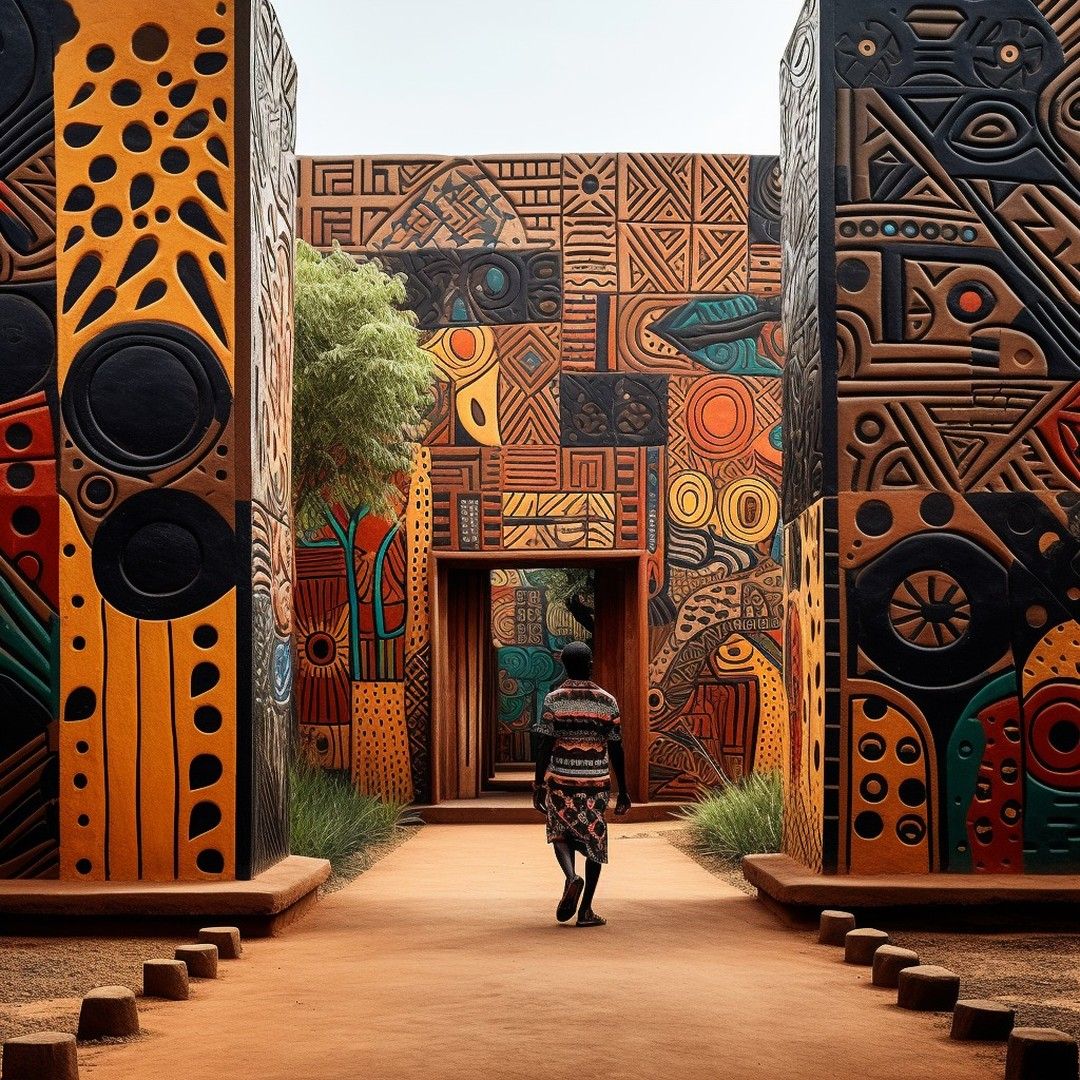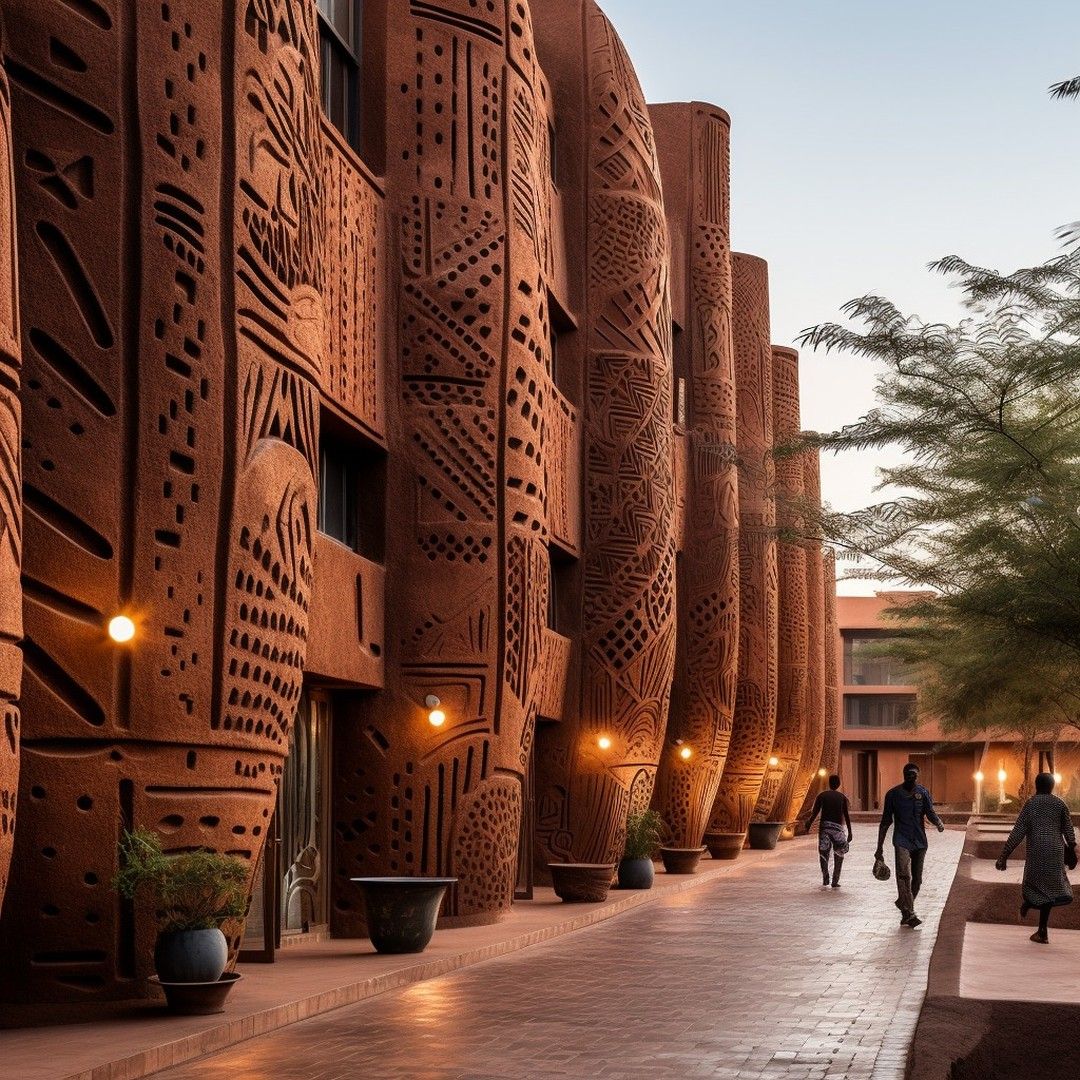HAVE YOU EVER HEARD ABOUT VERNACULAR ARCHITECTURE?
|

|
I recently came across a post on social media talking about "Vernacular Architecture," and I must admit, I was quickly impressed by the pictures I saw on the post. They were unique and yet undeniably attractive. This newfound fascination prompted me to explore more regarding what the phrase "Vernacular Architecture" means and where it comes from, or how it's defined.
It's intriguing how perspectives change over time. I recall that in my primary school days, we used to be cautioned against speaking vernacular languages while on the school campus, with the fear of repercussions. However, now, Vernacular Architecture is being celebrated by communities all over the world as trendy.
This intriguing shift from reprimand to reverence got me thinking about the deep-rooted significance of vernacular architecture. So, join me on this journey as we delve into the captivating world of Vernacular Architecture, where tradition meets innovation, and where the buildings themselves tell stories of culture, environment, and history.
What is Vernacular Architecture?
Vernacular architecture can be a challenging term to define precisely because it encompasses such a wide range of structures. In essence, it refers to the building style that arises organically within a particular region or community, primarily as a response to local climate, materials, and cultural traditions. Unlike grand architectural designs that are often associated with renowned architects and global trends, vernacular architecture is the architecture of the people.
Vernacular architecture is the embodiment of a region's cultural, environmental, and historical identity. It's not just about buildings; it's about a way of life, a connection to the land, and a profound understanding of what it means to be rooted in a particular place.
Origins and Evolution
The roots of vernacular architecture can be traced back to ancient times when people constructed their homes and buildings using materials readily available to them. As societies evolved, so did their architectural techniques, but the core principles of building harmoniously with the environment and culture remained constant. Over time, these regional architectural styles developed distinct features and elements that continue to be celebrated today.
Key Features of Vernacular Architecture
-
Adaptation to Climate: One of the most defining characteristics of vernacular architecture is its ability to adapt to the local climate. For instance, in hot desert regions, you'll find structures with thick, insulated walls to keep interiors cool. In contrast, buildings in colder climates often feature steeply pitched roofs to shed snow and trap warmth.
-
Use of Local Materials: Vernacular architecture makes efficient use of locally available building materials, whether it's adobe in the American Southwest, bamboo in Southeast Asia, or stone in the Mediterranean. This not only minimizes the environmental impact but also ensures sustainability.
-
Cultural Significance: Vernacular architecture is a reflection of a community's values, traditions, and way of life. Architectural motifs, decorations, and layouts often carry deep cultural and spiritual meanings. For example, the intricate wood carvings in traditional Norwegian stave churches.
-
Functional Design: Form follows function in vernacular architecture. Buildings are designed to serve a practical purpose efficiently. A classic example is the "Manyata houses" or the "Kral houses" in rural areas, where living spaces, storage, and animal shelters are seamlessly integrated.
-
Regional Diversity: Vernacular architecture is incredibly diverse, varying not only from country to country but also from one region to another within a country. Each area's unique culture, history, and natural surroundings are reflected in its architecture.

Enduring Appeal of Vernacular Architecture
Vernacular architecture holds an enduring appeal for several reasons:
-
Sustainability: With its use of local materials and environmentally conscious design principles, vernacular architecture aligns perfectly with modern sustainability goals.
-
Cultural Preservation: In an era of globalization and mass production, vernacular architecture serves as a living testament to a region's cultural heritage. It helps maintain a sense of identity and continuity.
-
Aesthetic Beauty: The simplicity and harmony of vernacular architecture often result in aesthetically pleasing structures that resonate with people on a deep level.
-
Human Scale: Vernacular buildings are often human-scale, creating a sense of intimacy and connection that is sometimes lacking in larger, more impersonal structures.
Conclusion
Vernacular architecture is a celebration of the human spirit's ability to adapt, create, and thrive within the constraints of its environment. It's a reminder that architecture is not just about creating striking facades but also about enhancing the quality of life and preserving cultural legacies. In a world that is increasingly focused on globalization and uniformity, the enduring beauty and relevance of vernacular architecture stand as a testament to the enduring power of local traditions and the wisdom of the ages.
Kind Regards
Julius Czar
Author: Julius Czar
Company: Zillion Technologies Ltd
Mobile: +256705162000 / +256788162000
Email: Julius@RealEstateDatabase.net
Website: www.RealEstateDatabase.net
App: Install the RED Android App
Follow me on: Twitter, LinkedIn, Facebook.
|
|
|
|
|
|
OTHER PAGES
|
|
![]()
|

|
|
Mansion
|
Location -
Kisaasi
|
|
District -
Wakiso
|
|
Type -
Mansion
|
|
Size -
eight bedroom
|
|
Status -
For Sale
|
|
Code - 217416
|
|
Ugx 1,500,000,000
|
|
|
|
|
|
|

|
|
stored
|
Location -
Lubowa
|
|
District -
Wakiso
|
|
Type -
Storeyed house
|
|
Size -
five bedroom
|
|
Status -
For Sale
|
|
Code - 217281
|
|
$ 250,000
|
|
|
|
|

|
|
appartments
|
Location -
Kiwatulee
|
|
District -
Wakiso
|
|
Type -
Apartment block
|
|
Size -
three bedroom
|
|
Status -
For Sale
|
|
Code - 217277
|
|
$ 950,000
|
|
|
|
|

|
|
appartments
|
Location -
Bbunga
|
|
District -
Wakiso
|
|
Type -
Apartment block
|
|
Size -
two bedroom
|
|
Status -
For Sale
|
|
Code - 217272
|
|
Ugx 1,200,000,000
|
|
|
|
|
|
|
|
|
|
|
|
|
|
|
|